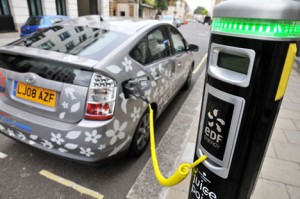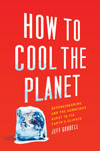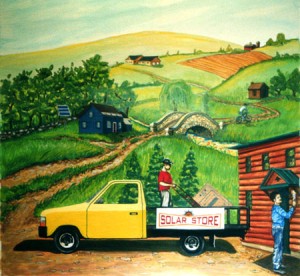How powerful has environmental cred grown? Powerful enough for an EPA renewable energy program to attract more multinational corporations than Steve Forbes’ New Year’s Eve party. In a country like ours that almost fetishises private enterprise, you know you’ve arrived when the Fortune 500 comes to play.
 The EPA’s Green Partnership program publishes annual lists of the top 50 renewable energy consumers in the program. Several are local, state and federal agencies who might be expected to toe the line considering that the current occupant of the White House is a renewable energy fan. There are also a few universities – reliable members of the liberal vanguard on most social issues. But the private corporations on the list outnumber the universities and public agencies 33 to 17. And we’re talking heavy hitters like Intel, Kohl’s, Cisco, Johnson & Johnson, Lockheed Martin, Walmart, Motorola, Lowe’s, Herman Miller, Sprint, ING Bank, Safeway Inc., Dannon, Bloomberg, Staples and Hilton Worldwide.
The EPA’s Green Partnership program publishes annual lists of the top 50 renewable energy consumers in the program. Several are local, state and federal agencies who might be expected to toe the line considering that the current occupant of the White House is a renewable energy fan. There are also a few universities – reliable members of the liberal vanguard on most social issues. But the private corporations on the list outnumber the universities and public agencies 33 to 17. And we’re talking heavy hitters like Intel, Kohl’s, Cisco, Johnson & Johnson, Lockheed Martin, Walmart, Motorola, Lowe’s, Herman Miller, Sprint, ING Bank, Safeway Inc., Dannon, Bloomberg, Staples and Hilton Worldwide.
These aren’t exactly members of the Ben & Jerry’s hippie corporate crowd, so what’s in it for them? I mean bottom-line benefits – dollars and cents. You can talk about corporate responsibility all day, but in the end corporations exist to make a profit. Anything that doesn’t make a profit in the corporate world has the shelf life of a fruit fly. The Green Power Partnership program doesn’t put a dime in their pockets. Actually, it’s probably the exact opposite. Renewable energy is still more expensive than fossil fuels, so from a purely economic standpoint a corporation would be better off burning coal.
Yet not only are these companies part of the Green Power Partnership, they had to bust some tail to get in. Companies that want to be a Green Power Partner have to estimate their annual electricity use; review their power purchasing requirements; find and buy green power; then prove they actually bought it. The EPA strictly defines “green” in this context as wind, solar, biomass, biogas, geothermal, or low-impact hydro. Or, if you want to hear it in the original bureaucratese, “A green power resource produces electricity with zero anthropogenic (i.e., human-caused) emissions, has a superior environmental profile to conventional power generation, and must have been built after the beginning of the voluntary market (1/1/1997).” Applicants have to submit certified information to the EPA, and it’s subject to review.
So it doesn’t help the bottom line and you have to bust a gut to qualify. Again, where’s the upside? I still maintain it’s not on the bottom line. But it is on the top line. In the last few years the corporate attitudinal axis tilted they decided that sustainability isn’t a hippie pipe dream – it’s good business. They want consumers to know they’re walking the green walk because consumers care, and it helps their public image.
 Green power’s influence extends beyond consumer markets into business-to-business. Take Intel as the bellwether for this movement. Intel isn’t a consumer business, but it developed a consumer brand through the “Intel Inside” campaign. Now it’s speaking directly to consumers again through its two-year-run atop the Green Power Partnership ranking. Intel buys 1.4 million kilowatt hours of renewable energy per year – or 51 percent of its total consumption. Google “Intel renewable energy” and you land on a page in the Intel press room dedicated to its renewable energy purchase program. The headline? “Intel Tops EPA’s List of Green Power Partners.”
Green power’s influence extends beyond consumer markets into business-to-business. Take Intel as the bellwether for this movement. Intel isn’t a consumer business, but it developed a consumer brand through the “Intel Inside” campaign. Now it’s speaking directly to consumers again through its two-year-run atop the Green Power Partnership ranking. Intel buys 1.4 million kilowatt hours of renewable energy per year – or 51 percent of its total consumption. Google “Intel renewable energy” and you land on a page in the Intel press room dedicated to its renewable energy purchase program. The headline? “Intel Tops EPA’s List of Green Power Partners.”
That’s a huge affirmation to the power of public perception. The ultimate expression of corporate power was once “What’s good for General Motors is good for the country.” With companies like Intel leading the charge, hopefully that will change to “What Intel does for the environment is good for the country.”








